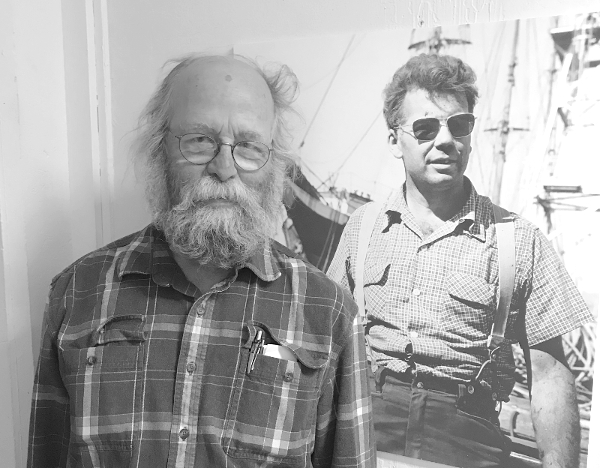
To mark the Park’s 30th anniversary, we asked two staff members – one of our more senior crew, and one who just recently came aboard - to talk about how they came to work at San Francisco Maritime National Historical Park. Today’s post tells Curator of Maritime History Stephen Canright’s story.
I first worked for the old San Francisco Maritime Museum in September of 1965. I was just out of high school. I worked for Curator Harlan Soeten as a general purpose assistant, working mostly in the exhibit shop on the ground level of the Museum Building. I put off starting college at San Francisco State for a semester, and worked full-time at first, for $1.62 an hour, which was minimum wage. I carried on with the Museum, sometimes part-time, sometime full-time, until the beginning of 1972, and then made a trip as a seaman in the four-masted bark Antarna. After that trip fell apart in Panama, I ended up in New York at South Street Seaport for four years, more-or-less on loan from San Francisco.
I never thought that I would spend my career in and around the Maritime Museum, but really the place was always a pretty good fit for me. After four years as a Sea Scout, I was hooked on maritime culture and heritage, and had some skills in woodworking, finishing, and seamanship. I was raised a Marxist, and tended to see the realities of the world in terms of economic history. Here was a place dedicated to a particularly appealing aspect of commercial history. If I hadn’t stayed with the Museum, I might have gone into journalism. I probably would have been laid-off at age sixty, as that field began to fall to pieces.
I was raised in San Francisco and always had some connections to the port. My father worked on the docks as a Ship Clerk for a while, but ended up with an import firm that brought in stuffed toys from Japan. My mother worked as the Librarian for the Longshore Union. We were certainly aware of maritime trade. I also developed a feeling for the beauty of ships and boats, which has never left me.
My first contact with what would become the Park was when my grandfather took my brother and me out on Muni Pier when I was maybe five. I remember that he was wearing a straw boater hat. Later, my brother and I were prowling along the waterfront and he did a drawing of the Balclutha at Pier 43. We got invited aboard by the ticket guy, who liked the drawing. I, of course, was knocked out. That was maybe 1956, and I would have been nine. Later still, I remember going into the Museum lobby and spending time trying to figure out the rigging of the five-masted ship Preussen.
These days, my main assignment is writing a history of the institution. I am up to 1996 at this point. Going through that tangle of events and personalities, looking at everyone’s hopes for the place, and at their assumptions about what it was supposed to mean, I get a new understanding of the challenges that we have faced, and of our strengths and our foibles. Sometimes I come away depressed and sometimes inspired, but usually with a bit more understanding.
Maybe my best day at the Park was when I stepped back and realized that the Visitor Center Part Two, the Walk Along the Waterfront, was just about finished, and that it was really pretty good.
There were some practical things on the ships that I am proud to have helped with. I drew the plan for the new topmast section for the Balclutha's mizzen in 1978, and the overall layout and the interior fittings for her deckhouse in 1991. I designed the new rig for the Alma, also in 1991. I contributed in various ways to the Thayer’s rebuild project, which I think was very well done.
I ended up writing almost all the text and captions for exhibits and interpretive panels between 1980 and about 2010, with critiques and editing from others on the team. I came up with the concepts for a number of these projects. I am proud of that work. Most of that material is gone now, most of it without a trace. That, I guess, is life in the museum business.
